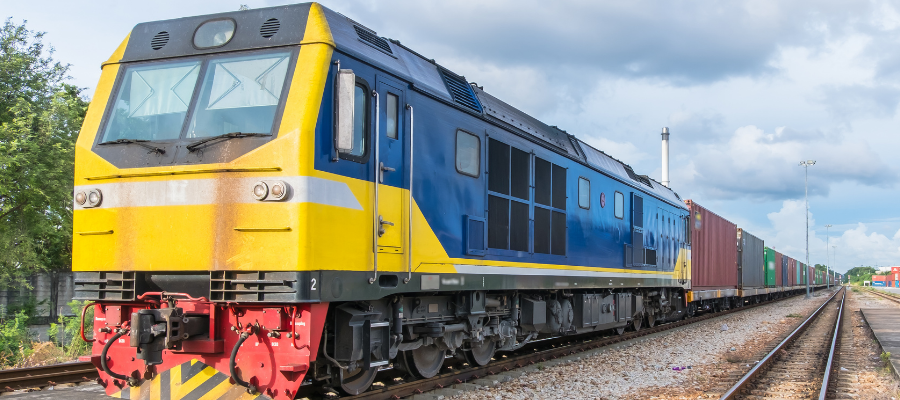🕒 Article read time: 2 minutes
Staying on track – delivering London’s rail freight strategy

As the country continues to decarbonise and move towards a net-zero future, businesses are encouraged to make the modal shift to rail, where possible, in order to reduce carbon emissions and keep the supply chain moving.
HIGHER URBAN DEMAND FOR RAIL FREIGHT
The demand for rail freight is noticeably higher in large cities including London, due to the high volume of materials required, such as cement and aggregates, to support the development of housing, business facilities and major infrastructure projects. The congested roads and emissions legislation within London make rail a sensible alternative for bulk handling; according to Network Rail, 40% of all aggregates used in London are delivered by rail.
The London Plan, released by the Greater London Authority in 2021, notes a target of building approximately 52,000 new homes annually in London, for the next 10 years. This target is an increase on previous levels and is a good opportunity for rail freight growth. However, as Network Rail’s 2021 London Rail Freight Strategy Report (LRFSR) suggests, there are some challenges which – in the view of Logistics UK – must be addressed to maximise growth potential.
CREAKING INFRASTRUCTURE LEADS TO CAPACITY CRUNCH
Greater London boasts approximately 30 active rail freight terminals, however, there are a number of track infrastructure challenges when transporting bulk materials. Currently, Heavy Axle Weight restrictions limit the movement of heavier trains across the network, resulting in blanket speed restrictions of 20mph in some areas. This creates significant capacity challenges, with London routes traditionally very busy. As a result, a number of targeted structures have been identified to allow for strengthening of the route. It is vital that once updated, these are maintained; rail structures have been in use since the nineteenth century and Logistics UK welcomes the LRFSR’s call for ongoing maintenance funding. Freight trains are constrained by structures such as tunnels and platforms and Logistics UK is encouraged to see the need for several gauge enhancements highlighted in the LRFSR.
Alexandra Herdman, Senior Policy Manager, Logistics UK, said: “Overall, Logistics UK wants to see more freight moved by rail, but this will depend on enhancing network capacity and capability for freight. Rail freight is better for the environment and congestion and a key component of the London freight system – supporting both construction and retail.”
TFL COMMITTED TO IMPROVING RAIL FREIGHT
Transport for London’s (TfL) Transport Strategy, published in 2018 committed to improve the efficiency of freight and servicing trips on London’s strategic transport network by identifying opportunities for moving freight on to the rail network, increasing the proportion of freight moved on London’s waterways, reviewing the potential benefits of a regional freight consolidation and distribution network and completing the network of construction consolidation centres in London. Network Rail’s strategy identifies potential enhancement projects to support these goals.
“Logistics UK stands ready to work with TfL and Network Rail to turn this strategy into a delivery plan,” Herdman said, “Together we can help prioritise and build the business cases for these projects in order to ensure London’s transport network can deliver on zero carbon, air quality and congestion goals, optimising the London freight network.”
*www.logistics.org.uk/rail
Published On: 10/11/2022 16:00:01

Comments Section
If you are a Logistics UK member login to add comments.